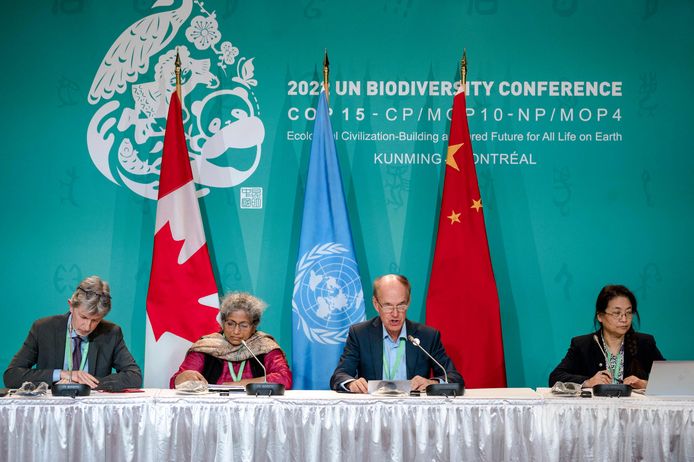Scientists around the world are proposing a new system for monitoring Earth's complex environmental evolution. By combining satellite data and images with data collected on Earth's surface, scientists can build a better picture of Earth's changing environment. In doing so, they hope to better comply with the goals of the 2022 United Nations Conference on Biodiversity (COP 15).
Scientists hope this multibillion-dollar plan will allow them to better monitor the health of the planet and protect the global supply of food, water and materials. In addition, they want to review the various governments that have signed up to at least 23 biodiversity targets during COP15 in 2022.
By 2030, animal extinction due to human behavior must end, and more than a third of the world's ecosystems must be restored to their original glory. But more and more scientists have expressed concern that they are not sure whether these goals will be achieved, mainly due to a lack of information.

With the help of a global monitoring system, they want to check whether the goals are achieved or not. “When you go to the doctor, you don't want him to look at you and say, 'Yes, you look healthy' or 'You look a bit pale,'” says Alice Hughes, an associate professor at the University of Hong Kong. Kong v. The Guardian. “They “They take measurements.”
Only 6.74 percent are known
Although there seems to be a lot to know about our planet, there is still a lot to discover. So far, only 6.74% of our planet has been sampled. The largest “blind spots” are the tropics, while they contain the bulk of global life. What we know most about – 82% of those samples – are Europe, the United States, Australia and South Africa.
In addition, high-altitude regions or deep oceans still raise big questions among scientists. They are often difficult or even impossible to achieve. Although science has seen tremendous innovations in scanning technology, these areas are still very difficult to monitor.
Global project
International cooperation is essential for the success of this plan. By sharing individual data and images, a global overview can be created.
“We need a larger monitoring system that allows us to measure biodiversity the way we measure weather. Maybe we don’t need it as much as weather, but we have to do it,” Maria Azeredo de Dornelas, a professor of biology at the University of St Andrews, told The Guardian.
“There are opportunities to do this very well. It will take international cooperation because it is not something that one country or even one continent can do. The planet’s biodiversity doesn’t really care about political borders.”
Read also. For example, Minister Demir wants to save one of the last sand dune areas on our coast: “There are no 250 holiday homes, only nature” (+)
Free unlimited access to Showbytes? Which can!
Log in or create an account and never miss a thing from the stars.

“Total coffee specialist. Hardcore reader. Incurable music scholar. Web guru. Freelance troublemaker. Problem solver. Travel trailblazer.”







More Stories
GALA lacks a chapter on e-health
Weird beer can taste really good.
Planets contain much more water than previously thought